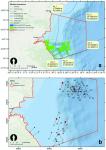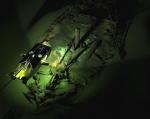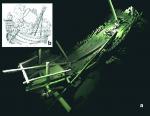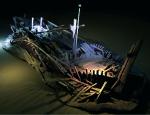Summary (English)
UNDERWATER ARCHAEOLOGICAL EXPLORATIONS ALONG THE BULGARIAN CONTINENTAL SHELF (Lyudmil Vagalinski – lvagalin@techno-link.com, Kalin Dimitrov, Jonathan Adams) The Quaternary paleolandscapes on the shelf were explored and geological sediment samples were taken by drilling. The geophysical surveys covered an area of 150 sq. km and were carried out with remotely operated underwater vehicles. Seven new shipwrecks were discovered, situated at depths between 45 m and 104 m. All the fifteen shipwrecks discovered in 2015 and 2016, situated at depths between 45 m and 301 m, were documented with ROV Supporter. High resolution video, photo and photogrammetric shooting were performed. Twenty-three shipwrecks, registered in 2014, were identified at depths between 923 m and 1731 m. All the shipwrecks were wooden sailing, rowing-sailing or rowing boats. The remains were in good condition with preserved equipment; even the ropes were preserved on some of the ships in the anoxic zone of the Black Sea. The earliest ship lies at a depth of 92 m.; it is single-masted, 20 m long and 7 m wide. There were three iron Y-shaped anchors, parts of a mast and a long raft, probably Lateen rigged, lying on the deck. Judging from an amphora, the ship dated to the 10th – 11th century AD and probably was Byzantine. Of interest also was a two-masted ship lying at 1102 m depth, 18 m long and 6 m wide, Lateen rigged with two large sails and two side rudders. It dated to the beginning of the 14th century. This type of ship is known from images and played a significant role in the Mediterranean merchant shipping, but so far has not been discovered archaeologically. The ship was probably Italian. The rest 36 shipwrecks dated to the 17th – 19th centuries. Very well preserved were a ship with rich carved decoration lying at 301 m depth, a double-masted Western European type ship lying at 130 m depth, and a Western European type ship of the first half of the 19th century lying at 121 m depth.
- Lyudmil Vagalinski - Archaeological Institute with Museum
- Kalin Dimitrov - Centre for Underwater Archaeology
- Jonathan Adams - Centre for Maritime Archaeology - University of Southampton
Director
Team
Research Body
- Archaeological Institute with Museum
- Centre for Maritime Archaeology - University of Southampton
- Centre for Underwater Archaeology






![Download [PDF]](/excavation/skins/fasti/images/results/download_sml.png)



